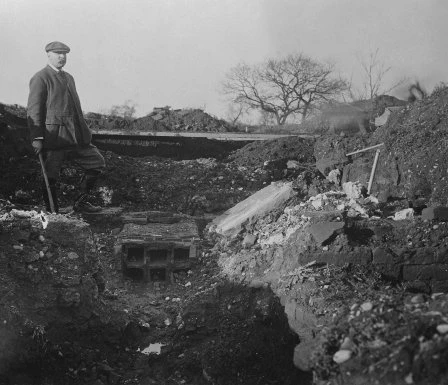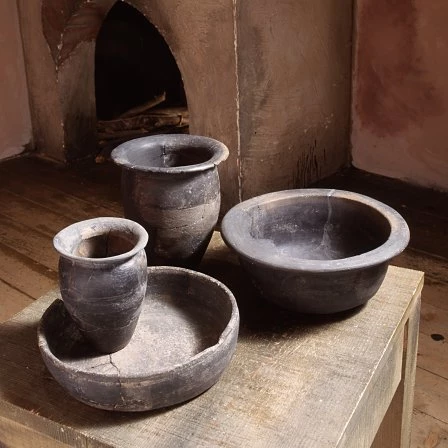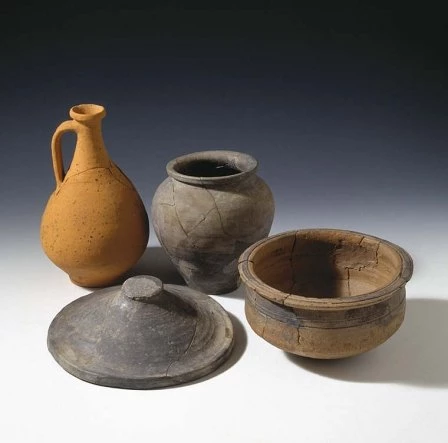Roman pottery in Wales
The Roman pottery kilns at Holt. These kilns were established by the 20th Legion to provide pottery for their fortress at Chester.
Black burnished Ware. This pottery was originally produced by the Durotriges tribe in Dorset and was widely used by the Roman army and civilians in Britain.
Here we see two South Wales Grey Ware vessels and a Caerleon grey ware bowl. South Wales Grey Ware was developed in the Usk region, and was notable for its storage jars and containers.
Range of vessels found at Usk Roman fortress - a flagon for drinking, a jar for storage, a bowl for mixing or cooking, and a large lid, probably used during cooking.
The Romans brought many things to Wales - roads, baths and towns among much else - but one of their most significant introductions was mass-produced pottery.
Pottery had been used in Wales for 4,000 years prior to the Roman conquest, but its production had always been small scale.
A hundred years after the Roman invasion Britain was awash with potteries, selling their wares across whole regions of Britain. Pottery was everywhere, and was used by almost everyone.
Pottery, the indispensable material
One of the key forces behind this change was the Roman army. The legions used pottery to store and transport food, drink and other raw materials. Pottery was used for cooking and serving food, and for building, plumbing and roofing. In short it was an indispensable material.
easily carried far and so, on arrival in a new area the Roman legions had to make sure that they had a fresh sources of supply.One of the first legionary fortresses in Wales was at Usk (Monmouthshire), established between AD55-60. Here the garrison maintained itself by making its own pottery, and by importing items from conquered territories in England and on the continent.
When a fortress was established at Chester, its pottery supply was guaranteed by the building of its own potteries at Holt (Wrexham). Military kilns also exist at other Welsh forts.
Although Welsh potters were at first unable to service the Roman army, over the years local industries developed to meet the needs of this enormous market. In the Usk region potters began to produce jars in a style known as 'South Wales Grey Ware'. Other cooking and serving vessels were also produced, but these faced stiff competition from the 'Black Burnished Ware' industry of southern Britain.
It was not just the army that benefited from these new industries. The massive quantity of pottery now being produced in Wales also found a market among the civilian and native population. On archaeological sites of this period across Wales, the presence of Roman pottery is a defining characteristic.
While for many native Britons baths and villas would have remained foreign concepts, Roman pottery became an acceptable element of the conquest and occupation - part of the Romanization of Britain.
Background Reading
A Pocket Guide: Roman Wales by W. H. Manning. University of Wales Press and The Western Mail (2001).
Report on the Excavations at Usk 1965-1976: The Roman Pottery edited by W. H. Manning. University of Wales Press (1993).



